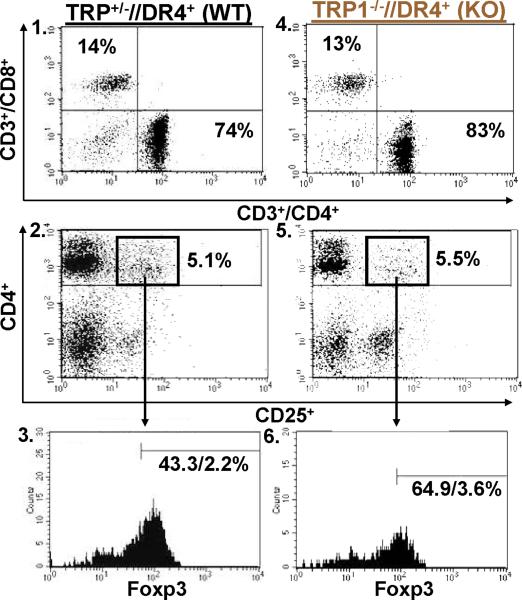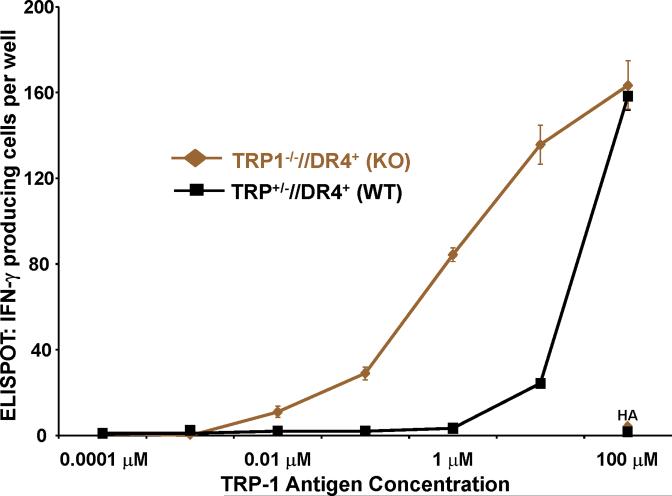Figure 2.
T cells from TRP1-/-//DR4+ Tg mice react more strongly to TRP-1 than wild-type controls. (A) TRP-1B-w (TRP-1-/-) mice were bred with DR4 Tg mice to generate TRP1-/-//DR4+ and control TRP1+/-//DR4+ littermates. (B) Flow cytometry analysis: LN populations obtained after vaccination are phenotypically equivalent. TRP1-/-//DR4+ (KO) and TRP1+/-//DR4+ (WT) littermates were immunized twice with recombinant hTRP-1. 14 days after the second immunization, LN cells (WT, panels 1-3; KO, panels 4-6) were harvested and stained with antibodies specific for murine CD4, CD8, CD3, CD25, and Foxp3. The panels are representative of three distinct experiments. (C) LN cells obtained from TRP-1 KO mice are more potent than WT controls. Following immunization, LN cells (4×105 per well) were stimulated ex vivo in ELISPOT plates with soluble anti-CD3 (2 μg/ml) or DR4+ EBV-B cells (1×105 per well; 1088 EBV-B) pulsed with peptide (100 □M) or protein (50 μg/ml) or lysate (105 cell equivalents). LN cells from both groups produce IFN-γ to anti-CD3 and EBV-B cells pulsed with mTRP-1277-297 or hTRP-1277-297 peptide, hTRP-1 or mTRP-1 protein, and to B16 and SK23 Mel lysate. Specific reactivity from both groups was blocked with anti-DR antibody HB55, but not with anti-MHC class I antibody W6/32. No reactivity observed to either the control peptide (HA306-318), protein (OVA) or lysates (MC-38, or 1102 Mel, both negative for TRP-1). (D) Ex Vivo ELISPOT titration assay: hTRP-1277-297-specific T cells from TRP1-/-//DR4+ mice are present at a higher frequency. TRP1-/-//DR4+ and TRP1+/-//DR4+ Tg littermates were immunized with hTRP-1 protein using the same immunization regimen. LN cells were harvested and stimulated (4×105 per well in triplicates) ex vivo with hTRP-1277-297 pulsed onto DR4+ EBV-B cells (1×105 per well; 1088 EBV-B) at titrating (100 to 0.0001 mM) peptide concentrations. All experiments were performed 2-3 times with similar results.




